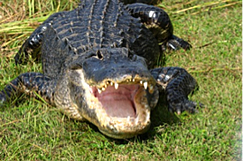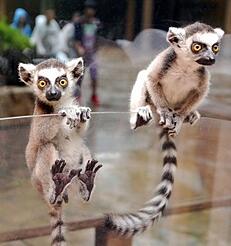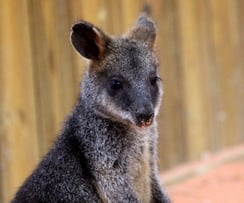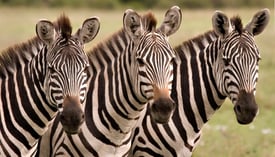If you could talk to animals, what do you think they would say?
Striking up a conversation with animals is not just the stuff of Dr. Doolittle. There is some real science to finding a way to communicate with our furry and feathered friends.
Filmmaker and zoologist Lacy Cooke’s series on the BBC examines scientists who are working in the field of animal communication
Talking with alligators, lemurs, and macaws may not be something we all can do, but we still can learn a lot from those who interact with them daily.
Here are some little known facts about the nine most popular animals at Wild Florida.
 Alligator – You may know the American alligator was nearly hunted into extinction in the 1960s, but it was the second time the reptile experienced that fate. Scientists believe the species is more than 150 million years old and somehow avoided the fate of the dinosaurs 65 million years ago.
Alligator – You may know the American alligator was nearly hunted into extinction in the 1960s, but it was the second time the reptile experienced that fate. Scientists believe the species is more than 150 million years old and somehow avoided the fate of the dinosaurs 65 million years ago.- Macaw – Many people know this type of parrot for its ability to talk, but their beaks and toes are pretty special too. Two of the bird’s toes face forward and two face backward, which improves their ability to climb and hold onto branches.
 Lemur – King Julian may have ruled the ring-tailed lemur roost in the animated film Madagascar, but that doesn’t happen in real life. The ladies are in control, which means they eat first and often push the males out of places where the females want to be.
Lemur – King Julian may have ruled the ring-tailed lemur roost in the animated film Madagascar, but that doesn’t happen in real life. The ladies are in control, which means they eat first and often push the males out of places where the females want to be.- Watusi – This breed of cattle from Africa is known for its horns, which are present in both bulls and cows. The butterfat content in Watusi milk is more than twice that of domestic cattle and they are often bred with other cattle for that specific reason.
-
 Wallaby – These animals are clustered by their habitat – rock, brush, and shrub to name a few. They fend off predators with their large tails, which is often as large as the animal itself. What you may not know about wallabies is that they are good swimmers, even if the only stroke they know is the doggie paddle.
Wallaby – These animals are clustered by their habitat – rock, brush, and shrub to name a few. They fend off predators with their large tails, which is often as large as the animal itself. What you may not know about wallabies is that they are good swimmers, even if the only stroke they know is the doggie paddle. - Cotton-top tamarin – These small monkeys are native to Colombia, living in trees in the forest. They enjoy a midday siesta, with some members of the group standing vigil over the others to warn of potential predators.
 African serval – Sometimes called a miniature cheetah, these small cats have a much different look than their feline cousins. The serval’s ears are much larger, which is used to pick up the sounds of prey like rodents and birds. Servals have been known to jump 10 feet in the air to snare birds or rodents.
African serval – Sometimes called a miniature cheetah, these small cats have a much different look than their feline cousins. The serval’s ears are much larger, which is used to pick up the sounds of prey like rodents and birds. Servals have been known to jump 10 feet in the air to snare birds or rodents.- South American Sloth – They may be the slowest creatures on earth, but they can move fast to escape a predator. About two-thirds of a sloth’s body weight is the contents of its stomach and it often takes more than a month to digest food.
 Zebra – You may know the Zebra for its stripes, but no two animal’s stripes are identical. The dominant stallion of the group usually will take up the rear if a herd is threatened, and the mare with the youngest foal will lead the group out of danger. (Wild Florida #ProTip: We've got zdonk and zorses, too!)
Zebra – You may know the Zebra for its stripes, but no two animal’s stripes are identical. The dominant stallion of the group usually will take up the rear if a herd is threatened, and the mare with the youngest foal will lead the group out of danger. (Wild Florida #ProTip: We've got zdonk and zorses, too!)
Maybe you're wondering where you can find animal experiences in Orlando. You can see all of these animals at Wild Florida, but the only way to get up close and personal is to be an animal keeper for a day. You’ll work with our own onsite animal keeper and learn more about these wonderful animals.
Spending the day as an animal keeper will be the most thrilling title you'll ever have. It’s a great way to have your questions answered about these animals, even if they aren’t doing the talking.





